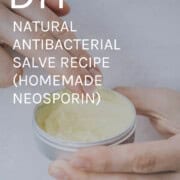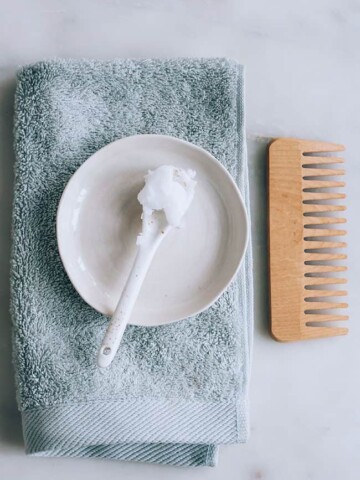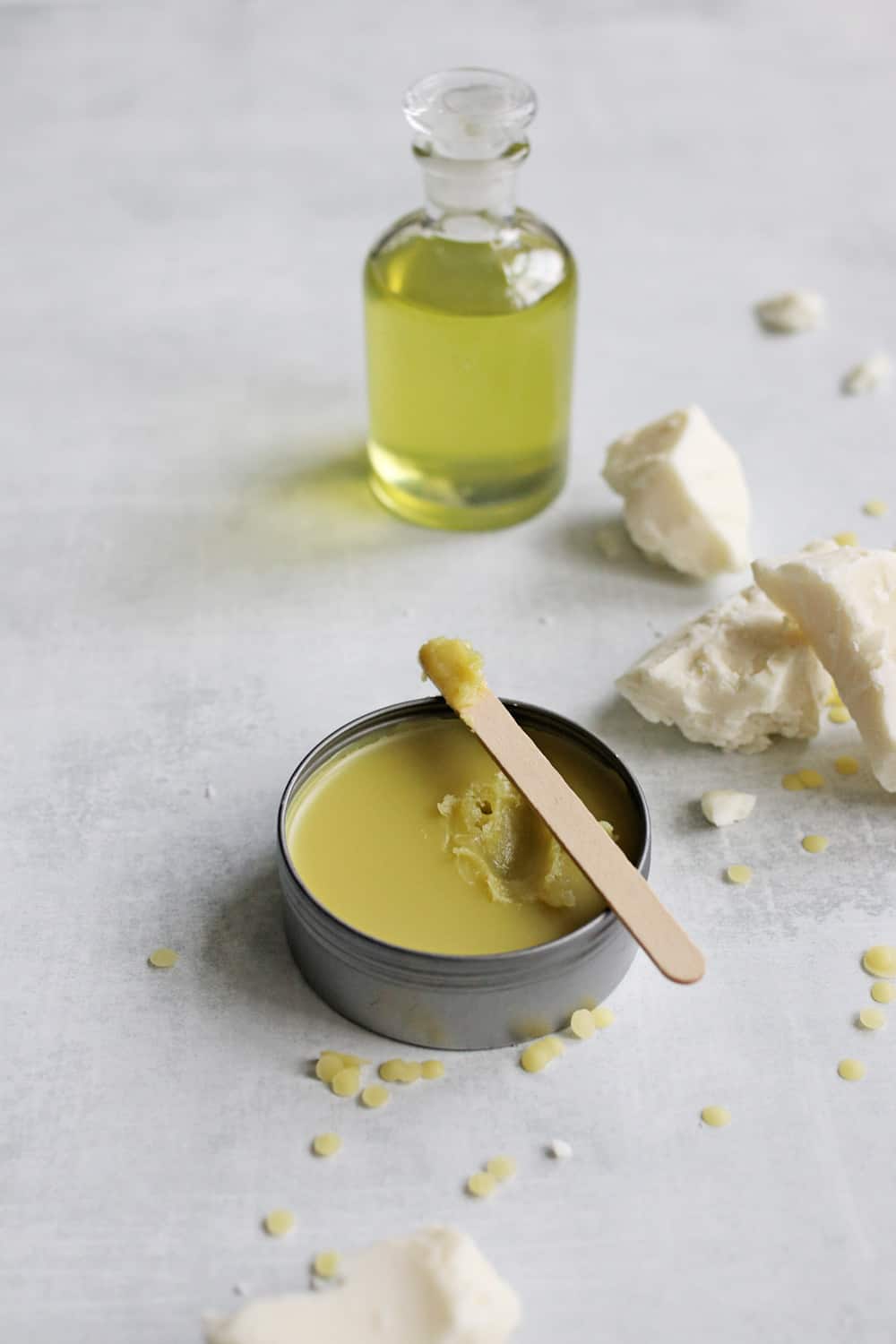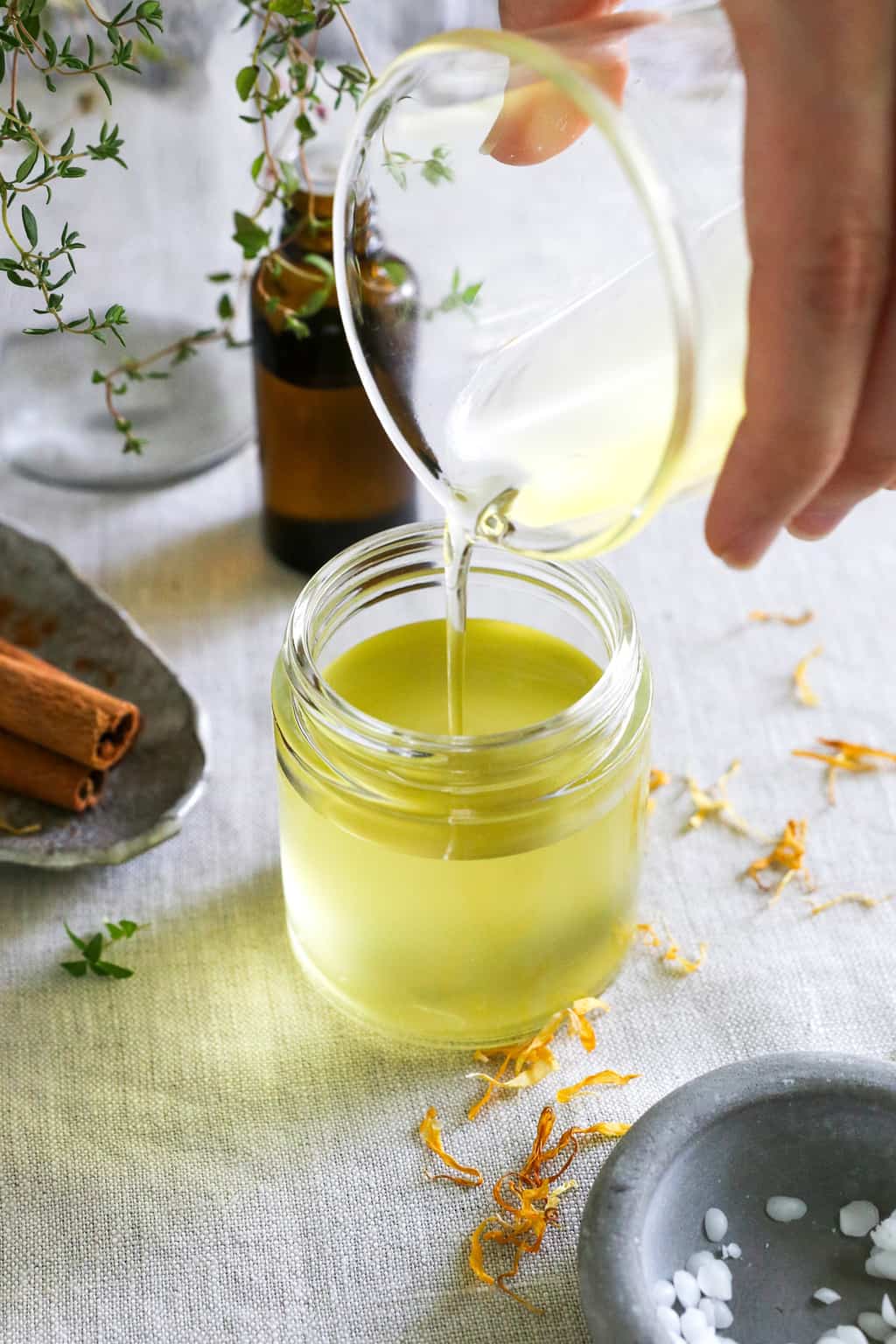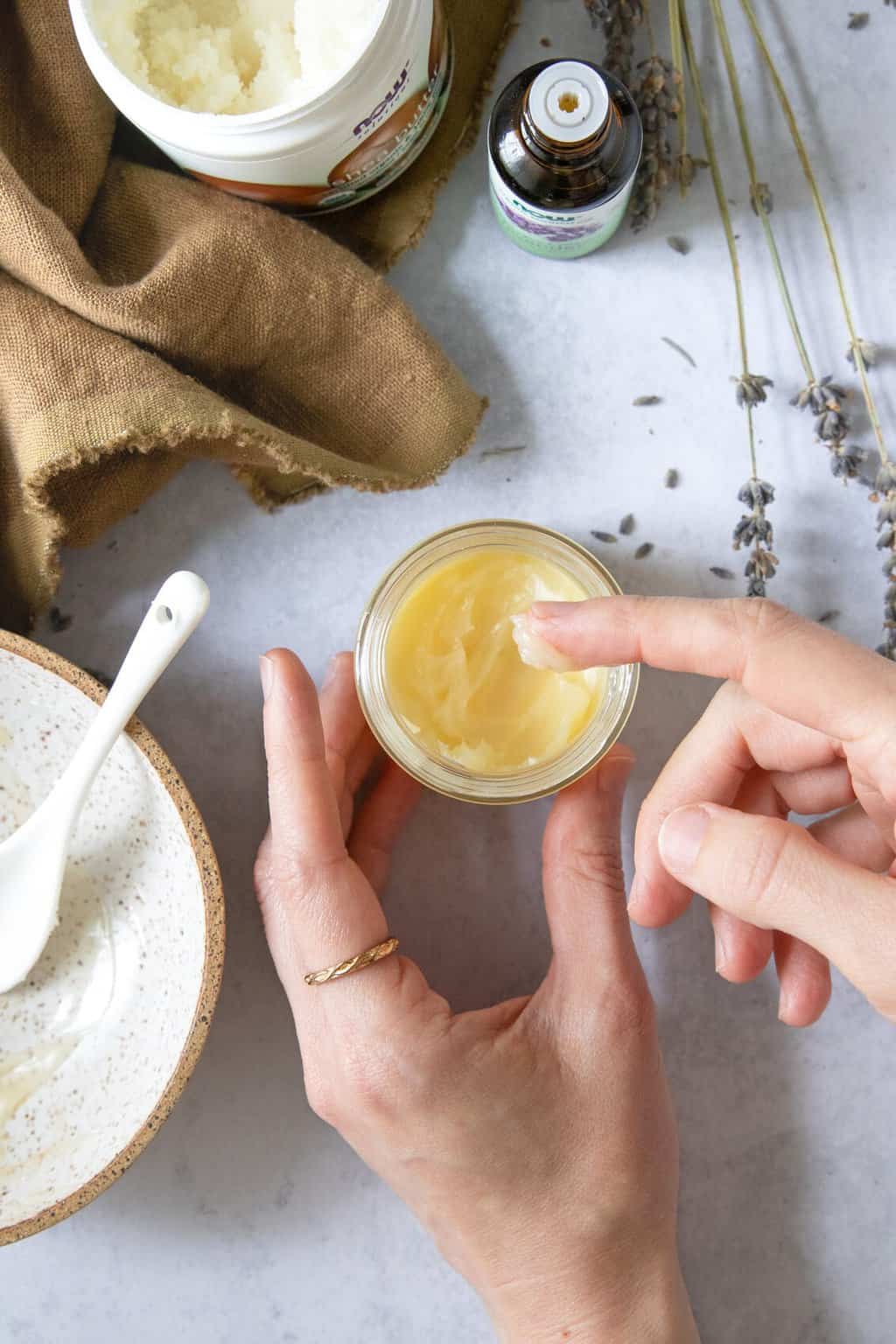Calendula and lavender infused oils make for one heck of a delicious-smelling healing cream. While not quite as potent as a store-bought cream, this natural homemade neosporin will gently soothe irritation and encourage wound healing naturally.
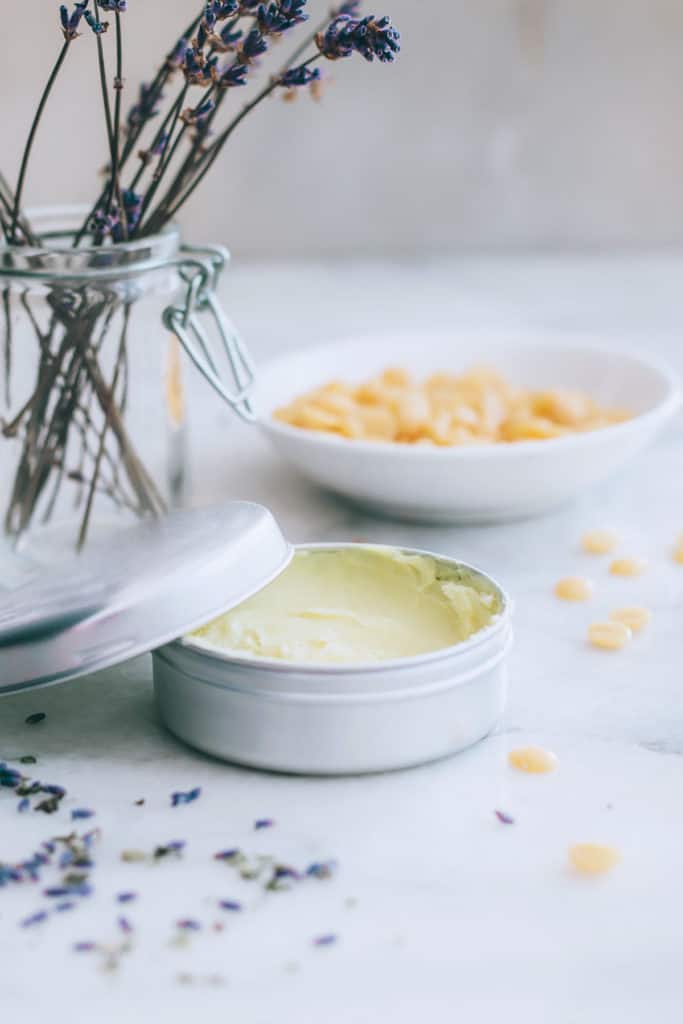
Use this all-natural antibacterial cream instead of reaching for Neosporin on those scrapes or cuts that are sure to walk in the door this year. Our DIY Neosporin is great for chapped, dry hands and feet that need something more powerful and soothing than a basic lotion.
Ingredients
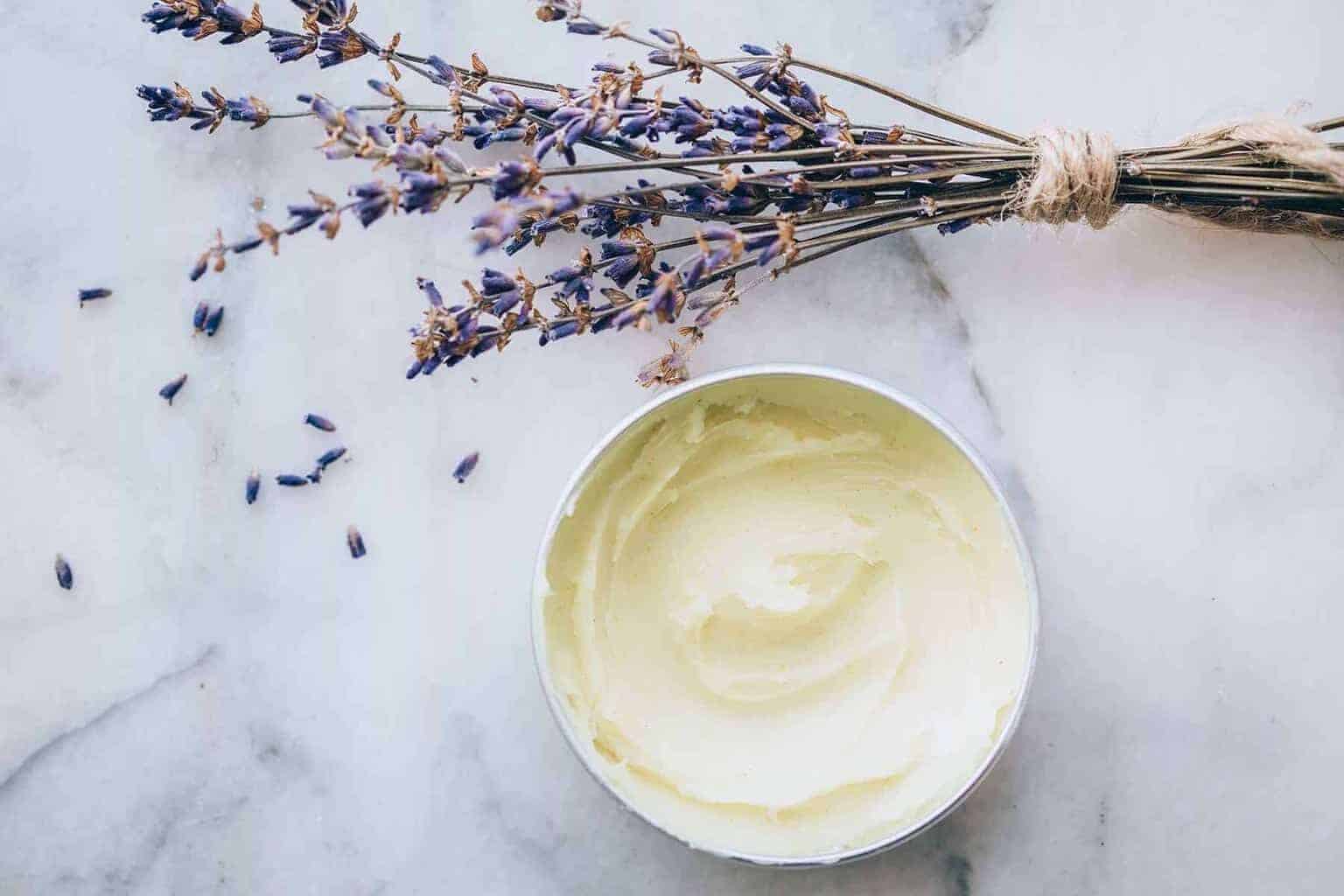
Calendula Oil
Now, the secret to this DIY neosporin is the calendula-infused oil. If you’ve ever used calendula, then you’re familiar with its amazing healing properties. The oil extracted from the plant commonly called the marigold has long been used externally as an anti-inflammatory to treat wounds and burns [source].
I like to use olive and coconut oils because they’re moisturizing, protective for the skin, and easy to find. Plus, coconut oil solidifies at room temperature, which helps give this balm its creamy consistency.
But in the spirit of saving money, you can use whichever carrier oils you happen to have on hand. If you don’t have a solid-at-room-temperature oil, like coconut oil, then go ahead and a little more beeswax to help your serum firm up.
Feel free to use any herbs you have on hand, like dried rosemary, thyme, chamomile, ginger, and yarrow, which are all great for wound healing. Get creative!
Beeswax + Honey
Beeswax is necessary for creating a solid consistency (vegans can use candelilla wax), and honey adds extra antimicrobial and wound-healing properties to the mix [source].
I recommend choosing organic raw honey, which hasn’t been processed and still retains most of its healing properties—but it can be expensive. If raw honey is cost-prohibitive, you can try buying it in smaller, more affordable quantities or just use regular honey.
Essential Oils
We've added lavender and tea tree for their natural antibacterial and antiviral properties.
Instructions

Step 1: Combine oils
Combine the olive and coconut oils in a heat-proof glass dish or wax pitcher.

Step 2: Melt oils
Place the pitcher inside a saucepan and fill with 1–2 inches of water. Heat over low heat until the oils have melted, stirring constantly.

Step 3: Add herbs + simmer
Add in the dried herbs. Simmer on low for at least 30 minutes.
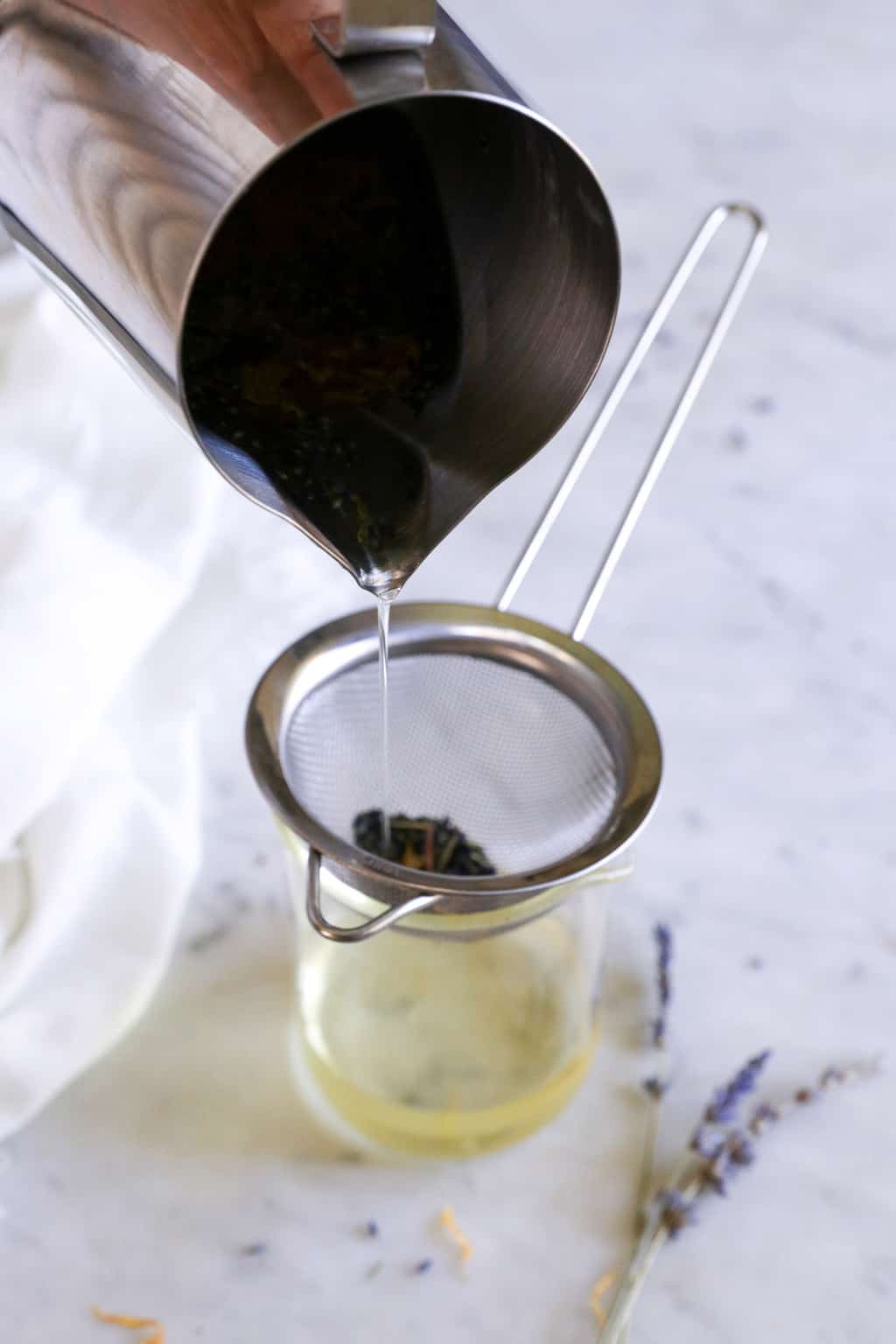
Step 4: Strain
Strain out the herbs with a fine mesh strainer or with cheesecloth.

Step 5: Add beeswax + honey
With the oils once again over the double boiler, add in the beeswax and honey. Stir until melted.

Step 6: Add essential oils
Turn off the heat and add your essential oils. Pour the contents into a jar with a lid and allow to set for 15-20 minutes.
Usage + Storage
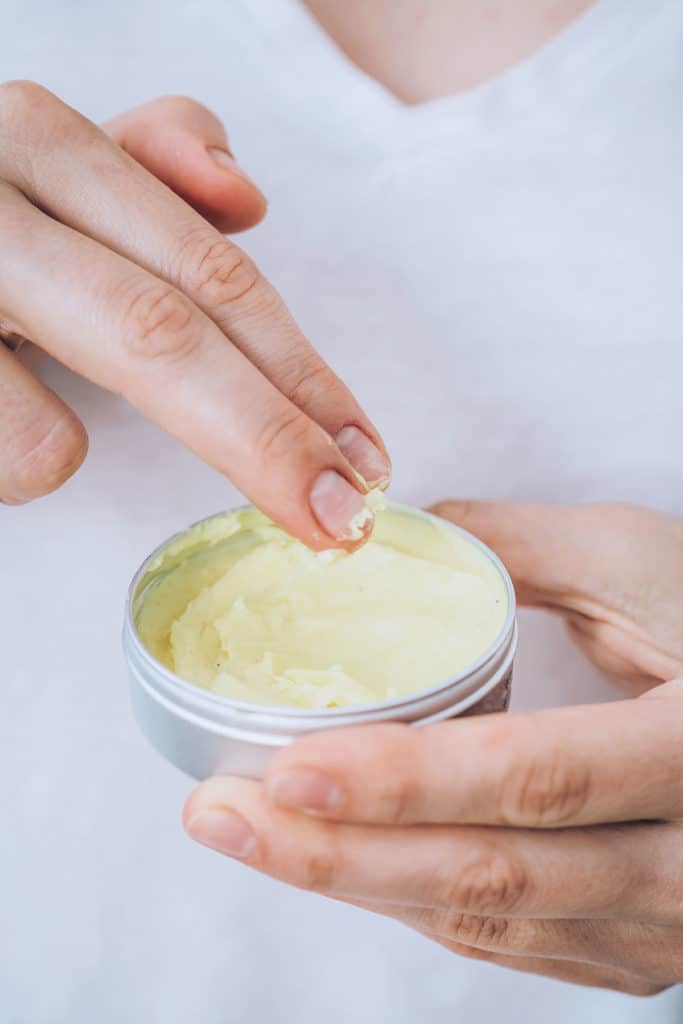
Use this DIY antibacterial salve recipe on those scrapes or cuts that are sure to walk in the door this summer.
Your salve will keep for up to 12 months when stored in a cool, dark spot. But this stuff is so good that I wouldn’t count on having it around that long!
Top Tip
A quick note on using honey in homemade body products: it has a tendency to separate and sink to the bottom over time. Even when using emulsifying wax, honey can still separate. It’s fickle like that.
To prevent separation, let your oils cool until they develop a loose, pudding-like consistency (thick but not solid) before adding the honey. Spoon the mixture into your 5-ounce container and stir as it cools completely.
FAQ
Sure! After your coconut and olive oils melt, add 50 drops of essential oil, and then stir to combine. You have roughly 8 ounces of carrier oil so that's about 6 drops per ounce (a 1% dilution) so feel free to go higher if you're comfortable with more.
You don’t need one, but you can use one if you like. Try adding 1–2 vitamin E capsules, which can act as a mild preservative. Or if you would preserve a stronger preservative, I like Leucidal Liquid SF.
Even if your honey completely emulsifies when making your salve, it may sink to the bottom over time. I recommend melting your salve ever so slightly and using a hand mixer to blend everything back together. Then transfer the salve back to its container to let it solidify.
DIY Natural Antibacterial Salve
Equipment
- Heat-proof glass or wax pitcher
- Small saucepan (you can also use a double boiler)
- Two 5-ounce containers with lids
Materials
- ½ cup olive oil
- ½ cup coconut oil
- ⅓ cup dried lavender
- ⅓ cup dried calendula
- 4 tablespoons beeswax pellets
- 1 tablespoon raw honey
- 50 drops tea tree oil
- 50 drops lavender oil
Instructions
- Combine the olive and coconut oils in a heat-proof glass dish or wax pitcher.
- Place the pitcher inside a slightly larger saucepan, and fill the saucepan with 1–2 inches of water. Heat over low heat until the oils have melted, stirring constantly.
- Add in the dried lavender and calendula. Simmer on low for at least 30 minutes.
- After simmering for 30 minutes, strain out the herbs.
- With the oils once again over the double boiler, add in the beeswax and honey. Stir until melted. Turn off the heat and add your essential oils.
- Pour the contents into a jar with a lid and allow to set.
- The contents should be solid within 15–20 minutes, depending on the depth of the jar you choose.
Notes
This article was medically reviewed by Dr. Gina Jansheski, a licensed, board-certified physician who has been practicing for more than 20 years. Learn more about Hello Glow's medical reviewers here. As always, this is not personal medical advice and we recommend that you talk with your doctor.
Photos by Ana Stanciu
69
